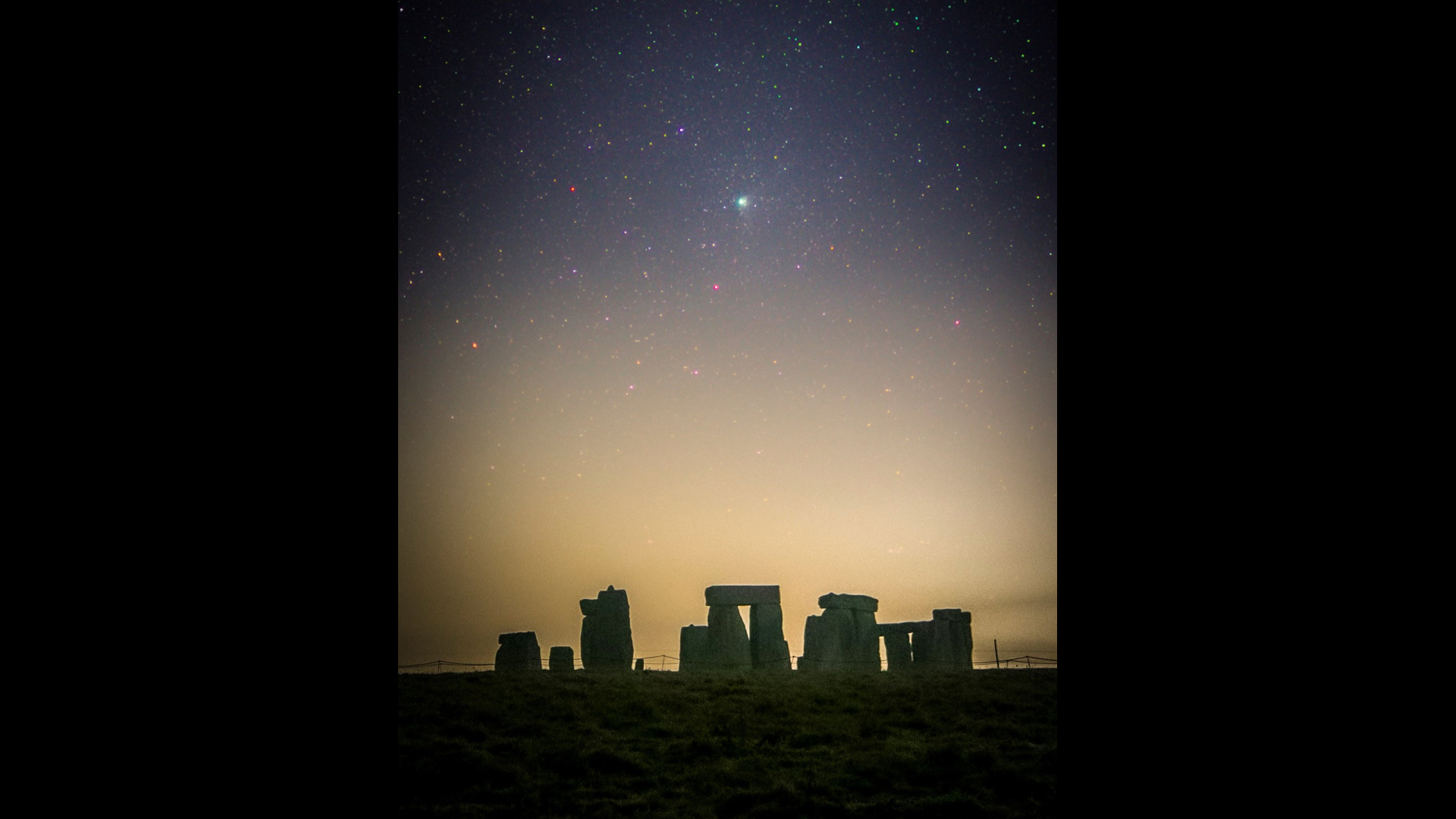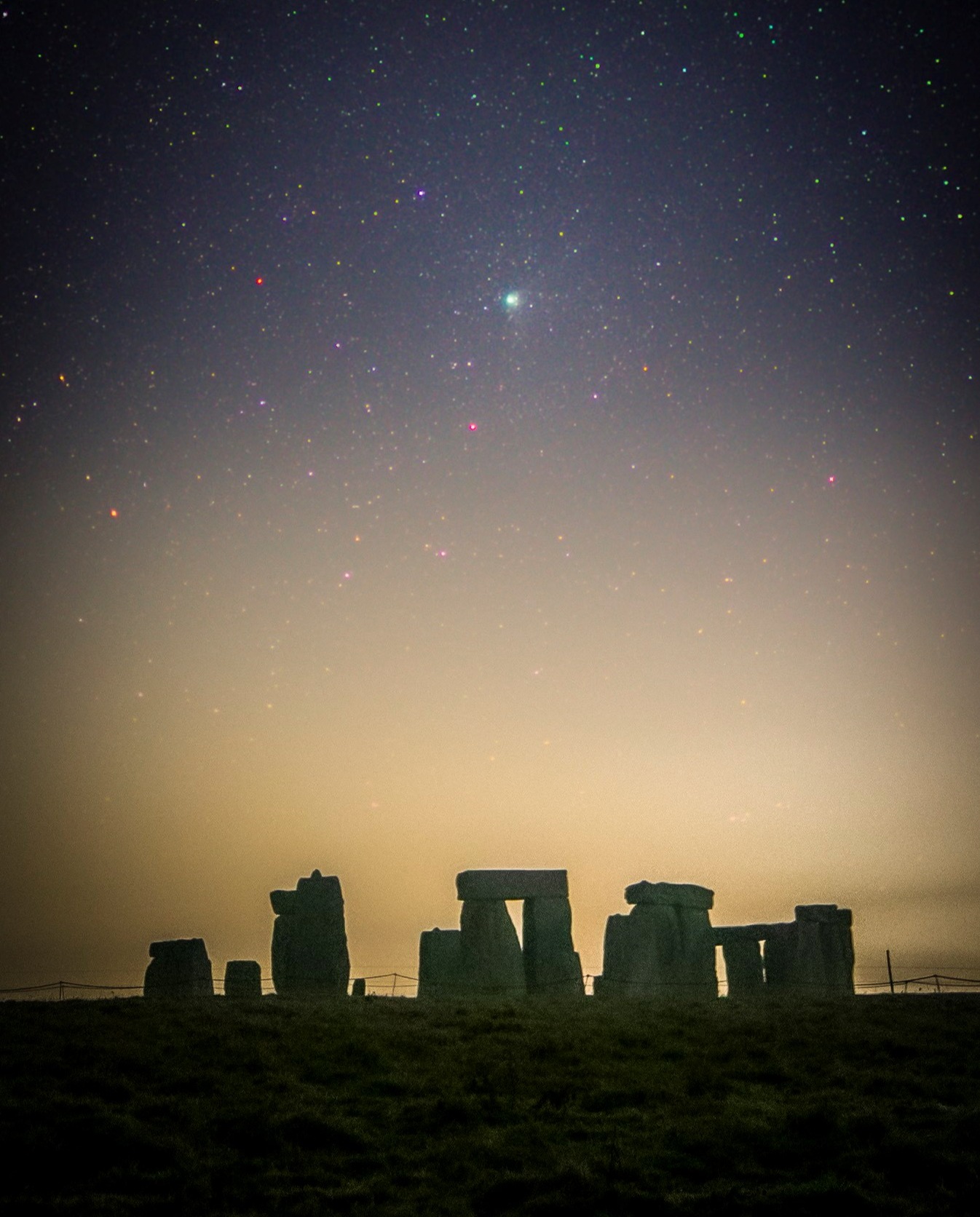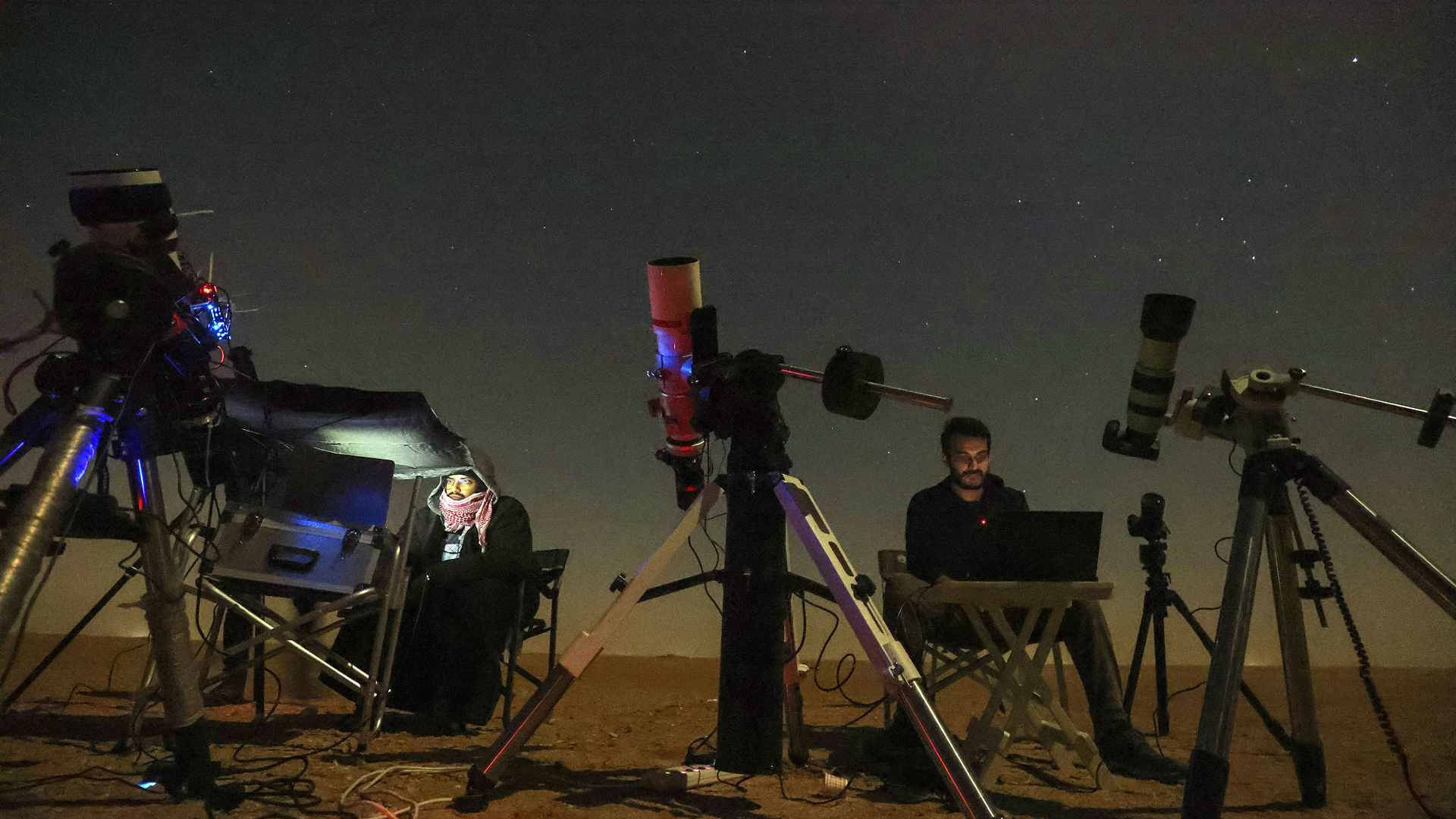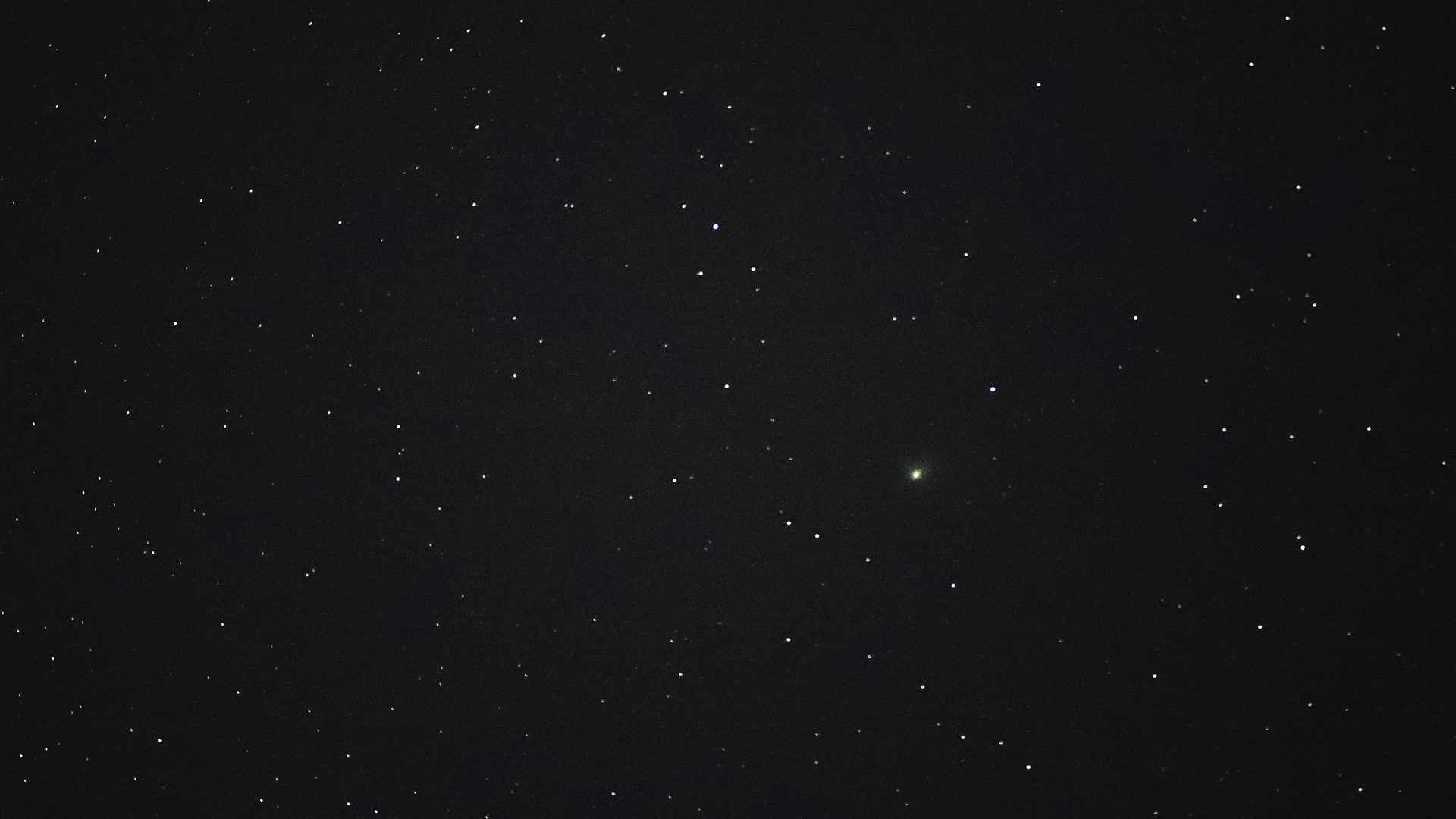Rare green comet's close approach a once-in-50,000 years feast for astrophotographers (photos)
Astronomy enthusiasts all over the world are turning their scopes toward a green comet that Earthlings may never see again.

In case you haven't heard yet, a rare green comet that hadn't been seen since the time of the Neaderthals made its closest approach to Earth on Wednesday (Feb. 1), thrilling astronomy geeks all over the world.
Just type "comet" into the Twitter search box, and you will see scores of stunning images capturing the green-tinged blot shining bright in the middle of the star-studded sky in all sorts of variations.
"A comet last visible during the Stone Age has appeared for the first time over Stonehenge," English Heritage, which manages the iconic prehistoric monument in the south of England, said in a tweet accompanying a stunning photograph of the comet above the stone circle.
"The last time the green comet, called C/2022 E3 (ZTF), was visible from Earth was around 50,000 years ago, long before the stone circle was built."
Related: How to see the green comet C/2022 E3 (ZTF) visible in the night sky now as it approaches Earth
The photo was snapped by experienced astrophotographer Josh Dury, who told Space.com that taking the image was "one of the most challenging" astrophotography projects he had ever undertaken.
"With thick freezing fog rolling in over Salisbury plain [where the stone circle is located], my camera equipment was freezing up and there were only short interludes of clear skies," Dury wrote in an email to Space.com. "Luckily the comet was visible for a period of time where I was able to capture this image, really a once-in-a-lifetime opportunity."
Get the Space.com Newsletter
Breaking space news, the latest updates on rocket launches, skywatching events and more!

The green comet, discovered in March 2022 by the Zwicky Transient Facility in California, made its closest approach to Earth on Wednesday night (Feb.1) into the early morning hours of Thursday (Feb. 2) in Europe. At its closest, the comet came within 26 million miles (42 million kilometers) of our planet, which is equivalent to about 28% of the distance between Earth and the sun.
A Twitter user called Susanoo Harlock shared another stunning snap of the comet shining bright above a Japanese castle.
"Comet C/2022 E3 (ZTF) came to Earth in 2023 for the first time in 50,000 years," Harlock said in a tweet. "My life is very fortunate to be able to see such a spectacular celestial show while I am still alive."
I listed my latest work on @foundation 🌐https://t.co/pgXggp4g3FComet C/2022 E3 (ZTF) came to Earth in 2023 for the first time in 50,000 years.⁰My life is very fortunate to be able to see such a spectacular celestial show while I am still alive.#NFT #nftphotography pic.twitter.com/YnUkHYuflTFebruary 1, 2023
Photographer Yasser Al-Zayyat shared images of astrophotographers in Kuwait camping in the al-Salmi desert 75 miles (120 km) northwest of Kuwait City, to capture the stunning comet. In the images, published via Getty, the comet is seen as a small greenish dot amid the black sky adorned with dozens of white-shining stars.


Some of the more technically savvy astronomers and astrophotographers used their equipment to capture the fast motion of the comet in the sky as it made its close approach. Chris Lee, who is not only an avid astrophotographer but also a visiting professor of astronomy at the University of Leicester in England and the former chief scientist at the U.K. Space Agency, shared an image showing a bright line of neon-like green light resembling a saber streaking across the night sky.
"The comet is certainly moving quickly across the sky these days," Lee said in a tweet. "A 30mins #eaa livestack can demonstrate this rather well #greenlightsabre 👍 #astronomy #astro #comet #cometZTF #comet2022E3ZTF"
The comet, which last visited the inner solar system some 50,000 years ago, made its closest approach to the sun on Jan. 12. It will remain visible to astrophotographers and amateur astronomers throughout the first half of February before disappearing in the direction of the outer solar system and into the Oort Cloud where it came from. Astronomers are not sure whether Comet C/2022 E3 (ZTF) will ever return to Earth, and even if it will, we will not be around to see it again.
Follow Tereza Pultarova on Twitter @TerezaPultarova. Follow us on Twitter @Spacedotcom and on Facebook.
Join our Space Forums to keep talking space on the latest missions, night sky and more! And if you have a news tip, correction or comment, let us know at: community@space.com.

Tereza is a London-based science and technology journalist, aspiring fiction writer and amateur gymnast. Originally from Prague, the Czech Republic, she spent the first seven years of her career working as a reporter, script-writer and presenter for various TV programmes of the Czech Public Service Television. She later took a career break to pursue further education and added a Master's in Science from the International Space University, France, to her Bachelor's in Journalism and Master's in Cultural Anthropology from Prague's Charles University. She worked as a reporter at the Engineering and Technology magazine, freelanced for a range of publications including Live Science, Space.com, Professional Engineering, Via Satellite and Space News and served as a maternity cover science editor at the European Space Agency.
